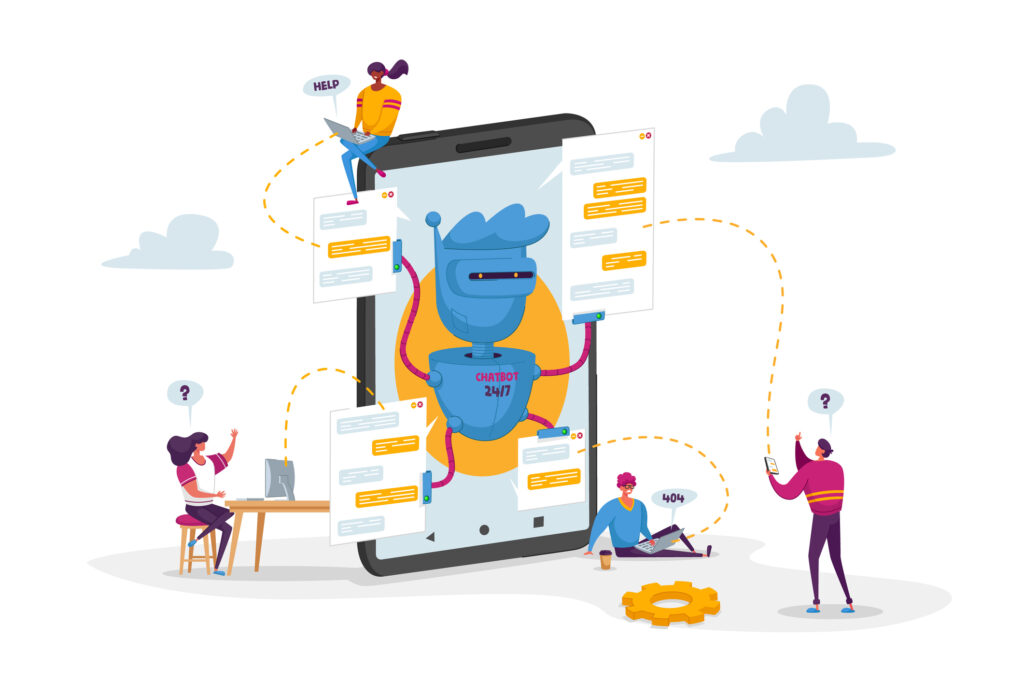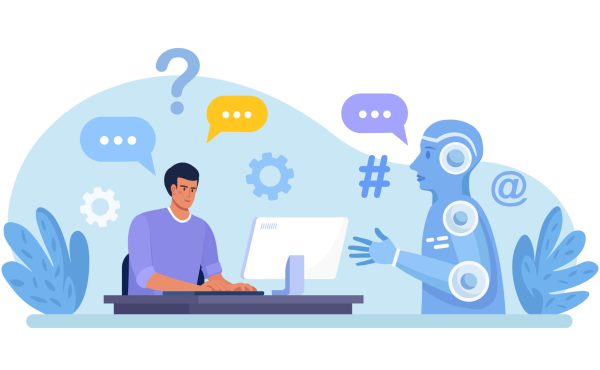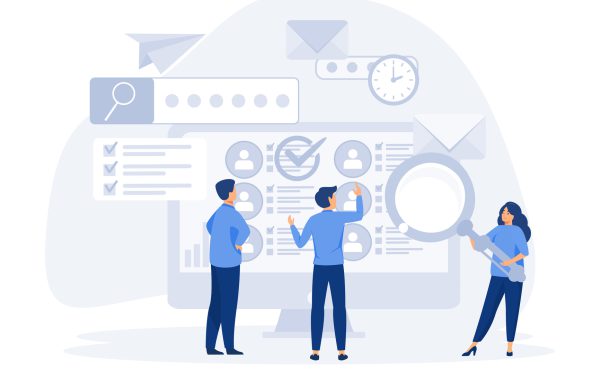The tech world is buzzing about agentic AI – AI “agents” that can act with greater autonomy than traditional software bots. But is this just another hype term or a genuine game-changer for IT operations and digital transformation? In this article, we’ll break down what agentic AI means, how it differs from yesterday’s AI and automation, and why it matters for IT professionals. We’ll also explore its potential value in digital transformation and AIOps (AI for IT operations), how it might reshape roles and workflows, and the risks and challenges to watch out for. Let’s dive in with a friendly, jargon-light look at this emerging trend.
What Exactly Is Agentic AI (and How Is It Different)?
Agentic AI refers to systems with a degree of autonomy – they don’t just follow prompts or scripts, but make decisions and take actions to achieve goals. Unlike typical chatbots that wait for instructions, agentic AI can plan, strategize, and learn from experience to handle multi-step tasks. For instance, instead of just suggesting travel options, it might organize an entire business trip based on your preferences, all with minimal oversight. This proactive capability is what distinguishes agentic AI from traditional automation.
Conventional automation relies on fixed rules: you give input, it gives output. In contrast, agentic AI understands broader objectives and works within context to fulfill them independently. Thanks to advances in large language models (LLMs), this long-standing vision of intelligent agents is now becoming real. As Harvard Business Review notes, these systems offer “supercharged reasoning and execution capabilities,” reshaping how humans and machines collaborate. Rather than just generating content, agentic AI is built to make decisions and take initiative.
For example, instead of simply rebooting a server when a metric exceeds a threshold, an agentic AI could monitor multiple metrics, diagnose issues, decide on the best action, and execute it—all without being explicitly told “if X, then Y.” It’s a shift from automation (doing tasks) to autonomy (deciding what tasks to do and how). In short, agentic AI moves beyond helpful tools and acts more like independent team members.
Agentic AI: Just a Buzzword, or a Meaningful Shift for IT Ops?
Skepticism is natural with any new tech term, and “agentic AI” might sound like just another buzzword. But early signs suggest it’s more than hype. Forrester named it a top emerging technology for 2025, and Gartner predicts that by 2028, one-third of enterprise software will include agentic AI—up from less than 1% in 2024—enabling around 15% of routine decisions to be made autonomously.
Adoption is already underway. A Capgemini survey found that 10% of large enterprises are using AI agents today, with 82% planning to adopt them in the next three years. Most executives expect benefits in automation, productivity, and customer service. Major vendors like Salesforce and ServiceNow are making agentic AI central to their strategies, and OpenAI’s CEO has suggested these agents will soon enter the workforce. Analysts, tech leaders, and vendors alike are treating agentic AI as a serious development.
That said, it’s still early days. Gartner places agentic AI at the “Innovation Trigger” stage—meaning excitement is building, but mainstream maturity is still ahead. Pilot programs are increasing, but best practices are still emerging. So while the potential is real, IT leaders should stay both curious and cautious. Agentic AI signals a meaningful evolution in IT operations, but one that’s still unfolding.
Why Agentic AI Matters for Digital Transformation and AIOps
Agentic AI has the potential to dramatically accelerate digital transformation by adding intelligence and autonomy to processes that were once manual or semi-automated. These AI agents can integrate with systems like CRM, ERP, and IT platforms to analyze data, orchestrate workflows, and even generate reports—without human prompting. For example, an AI agent in a supply chain might detect rising demand and automatically reorder stock or reroute deliveries, responding in real time without waiting for human review.
In IT operations and AIOps, agentic AI goes beyond current tools that merely detect issues and suggest fixes. It enables full autonomy—AI agents that detect system anomalies and take corrective action immediately. Instead of just alerting a team to a memory leak at 3 AM, an agent could spin up servers or restart services on its own to prevent an outage. This shift enables IT to move from reactive firefighting to proactive problem prevention.
Routine IT tasks like patching, credential rotation, or infrastructure scaling are prime targets. AI agents can spot early warning signs, act on them, and learn from past incidents to respond even faster next time. A growing use case is software development automation—where agents write, test, and deploy code or manage DevOps pipelines with little oversight. This could speed up releases while reducing errors and manual effort.
From a digital transformation lens, agentic AI enhances innovation by breaking down data silos, enabling faster decisions, and improving agility. An AI agent might scan support tickets across channels, detect a product issue early, and alert engineering—all without human involvement. As EY put it, these agents adapt to changing conditions and handle surprises autonomously, making process automation smarter and more resilient.
In short, agentic AI is emerging as a powerful tool for both IT efficiency and enterprise agility—key drivers of modern digital transformation.
Rethinking Roles, Workflows, and Decision-Making in IT
If agentic AI becomes a mainstream part of IT operations, it will undoubtedly reshape roles and workflows on IT teams. Rather than replacing humans, the current view is that these AI agents will augment the workforce – taking over repetitive, low-level tasks and freeing up people to focus on higher-value work. For instance, instead of an IT operator spending hours each week manually combing through system logs or executing routine maintenance scripts, an AI agent could handle those chores. The operator’s role then shifts to overseeing the AI’s performance, handling exceptions, and tackling more complex problems that the AI can’t solve. In other words, some IT professionals may evolve from doers to “bot supervisors” or strategists who guide and refine the work of AI agents.
We’re already seeing hints of how roles might change. In software development, agentic AI is poised to turn coding assistants into autonomous coders – Gartner even predicts that within a few years, AI agents will write the majority of code, which will require many software engineers to reskill and focus on tasks like architecture, design, and oversight of AI-generated code. Developers might spend less time cranking out boilerplate code and more time reviewing AI contributions or designing complex systems that AI agents then implement. This doesn’t mean developers disappear; it means their expertise is applied differently. Similarly, for IT operations teams, an “AI-augmented” workflow could look like this: an AI agent monitors systems and fixes what it can automatically, whereas human engineers concentrate on planning upgrades, improving systems, and handling the novel incidents that fall outside the AI’s knowledge.
Workflows will likely become more fluid and AI-integrated. Many processes that used to have multiple manual checkpoints could be streamlined with AI agents taking on intermediary steps. For example, an IT service desk workflow might use an AI agent as the first-line triage: the agent understands the incoming ticket, checks knowledge bases, maybe even executes a solution for a known issue, and only then passes it to a human if it’s truly new or requires approval. In project management or DevOps, you might have agents that automatically create tickets, update documentation, or coordinate deployment pipelines. This means humans and AI will work in tandem, each doing what they’re best at – the AI handling speed and scale, humans handling judgment and creative problem-solving.
Importantly, decision-making dynamics will evolve. Many routine decisions (like how to route a request, whether a server needs to be taken offline, or which resource to allocate) can be offloaded to AI agents following agreed policies. This can greatly accelerate operations. However, organizations will need to set boundaries on AI autonomy – deciding which kinds of decisions the AI can make on its own and which require human sign-off. For IT leaders, a new part of the job may be crafting these decision policies and ensuring AI actions align with business goals and ethics. In effect, agentic AI might necessitate new governance frameworks. As one LinkedIn tech author noted, embracing agentic AI means rethinking how we set objectives and success criteria for tasks – we may need to define goals for AI agents in ways that ensure their “autonomy” still yields reliable, intended outcomes.
We should also prepare for the concept of multi-agent teams. It’s quite possible that in a few years an IT team might include several AI agents with specialized roles (one focused on monitoring and incident response, another on knowledge management, another on cybersecurity scanning, etc.) alongside human team members. Managers might find themselves “hiring” or configuring an AI agent for a role much like they’d onboard a new team member. In fact, agentic AI is “inherently a team effort” – success often involves orchestrating multiple agents, each handling part of a complex goal. This will require IT professionals to develop skills in coordinating and collaborating with AI. Communication and trust between human and AI colleagues will be key – team members will need to understand what the agents are doing and why, and vice versa (agents need clear objectives and feedback from humans). It’s a fascinating shift: the IT workforce may soon include digital workers that don’t take coffee breaks but still need mentorship and management in their own way.
Risks, Limitations, and Implementation Challenges
Before anyone declares agentic AI the silver bullet for IT, it’s crucial to weigh the risks and limitations. As with any powerful technology, there are potential downsides that IT leaders must manage:
Unintended Actions:
Autonomous agents can make mistakes. An AI might reboot the wrong server or apply an incorrect fix due to flawed data or logic. Even though agentic AI is less prone to the “hallucinations” seen in generative AI, errors can still happen. To reduce risk, critical decisions may require human oversight, especially early on.
Bias & Misaligned Goals:
AI agents act based on the data and objectives they’re given. If either is flawed, outcomes can be biased or counterproductive. For instance, an IT support agent could prioritize certain departments unfairly due to skewed historical data. Clear, well-defined goals—and ongoing monitoring—are essential to avoid “garbage in, garbage out” scenarios.
Security Risks:
Agentic AI often needs broad system access, which increases the attack surface. Vulnerabilities in APIs or prompt injection attacks could let bad actors hijack agents. If an agent can make changes or execute transactions, the consequences of a breach could be severe. Strong security controls, audits, and anomaly detection will be critical.
Overreliance & Skill Decay:
Delegating too much to AI can erode human expertise. Teams may lose touch with basic troubleshooting or overlook issues if they assume “the AI has it handled.” Periodic reviews, training, and keeping humans involved in key workflows can help maintain readiness and accountability.
Implementation Challenges:
Rolling out agentic AI isn’t plug-and-play. Legacy systems may lack the APIs or telemetry needed. Agents require clean historical data and thoughtful configuration to work well. Teams also need training—both technical and procedural—to interact with AI agents effectively. Cultural resistance and regulatory requirements (like audit trails) may also slow adoption, especially in heavily regulated industries.
The bottom line on risks: The prize is big – agentic AI promises greater productivity, innovation, and insights – but it comes with non-trivial risks. Being aware of these and planning for them is half the battle. With proper oversight, security measures, and a clear understanding of the technology’s limits, organizations can avoid the pitfalls. Agentic AI should be approached as a powerful new tool that requires new safety rails and governance, rather than as an off-the-shelf cure-all.
Conclusion: Navigating the Agentic AI Journey in IT
Agentic AI marks a major shift in IT—from passive tools that offer suggestions to autonomous agents that act, learn, and collaborate with human teams. For IT leaders, this opens the door to faster incident response, smarter resource use, and freeing teams from low-value, repetitive tasks. It’s a chance to refocus human talent on strategy and problem-solving—not midnight crisis calls.
But realizing these benefits takes more than hype. Agentic AI must be trained, tested, and trusted. Success will come to organizations that start small, experiment, and build frameworks for human-AI collaboration. That might mean piloting agents in low-risk environments, tracking clear success metrics, and involving IT teams early to ensure alignment and trust. Change management and education are key.
More broadly, agentic AI is part of a larger trend toward intelligent, autonomous systems that act faster than humans ever could. As Gartner notes, AI is gaining the ability to plan and execute on its own—reshaping automation and productivity. For IT, this means a future where machines handle the routine, and humans focus on steering the bigger picture.
Ultimately, agentic AI could be a game-changer for IT operations and digital transformation—if adopted wisely. With thoughtful planning, strong safeguards, and investment in team readiness, organizations can unlock real value while minimizing risks. It’s not just a tool—it’s a journey toward a new way of working, where human expertise and machine autonomy go hand in hand.




